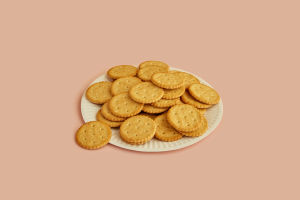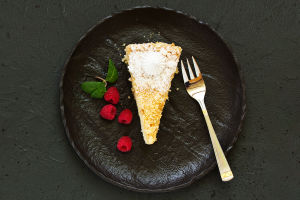There's something almost magical about a fresh-baked cookie: the golden edges, gooey center, and delicious aroma make it irresistible.
But creating that perfect cookie every time isn't just about following a recipe. It's a science.
From ingredients to baking techniques, every factor plays a role.
Here's a look at the chemistry behind crafting cookies that taste as good as they look—and how you can use this science to elevate your cookie game.
The Ingredients: Building Blocks of Great Cookies
Each ingredient in a cookie recipe serves a unique purpose. Here's how some common ingredients contribute to the perfect cookie.
1. Flour – The Foundation
Flour provides structure to cookies. The type of flour impacts the texture: all-purpose flour is ideal for a balanced, chewy cookie, while cake flour creates softer, lighter cookies. The gluten in flour strengthens as it bakes, helping cookies keep their shape. For chewier cookies, consider adding bread flour, which has more gluten, to give them a denser, heartier bite.
2. Sugar – More Than Just Sweetness
Sugar does more than make cookies sweet. The type of sugar—white or brown—affects texture, moisture, and even spread. White sugar encourages crispiness, as it melts and caramelizes at a higher temperature. Brown sugar, with its molasses content, keeps cookies soft and moist. A balance between the two can give you the perfect chewy, crispy texture.
3. Butter vs. Shortening – Flavor and Texture
Butter's water content creates steam as it bakes, giving cookies their lift. Butter also has a rich flavor, but it can make cookies spread out more. Shortening, on the other hand, doesn't melt as easily, so it keeps cookies thicker and denser. Want the best of both worlds? Try a mix of butter and shortening for a flavorful cookie that holds its shape.
4. Eggs – The Binder and Moisturizer
Eggs provide moisture, and richness, and help bind ingredients together. More egg yolks mean a denser, creamier cookie, while egg whites lead to lighter textures. Some bakers even add an extra yolk for a richer, fudgier texture. If you want a chewier cookie, try chilling the dough with an extra egg yolk before baking to help the dough firm up.
5. Baking Powder and Baking Soda – The Leaveners
Baking soda reacts with acidic ingredients like brown sugar, creating bubbles that help cookies rise and spread. Baking powder, which contains acid and base, produces a milder rise. Using both can give your cookies a balanced rise and texture.
Techniques: Small Tweaks, Big Impact
Knowing your ingredients is just the beginning; baking techniques can make all the difference.
1. Chill the Dough
Chilling cookie dough before baking helps the fats solidify, leading to less spread during baking. It also allows flavors to meld, resulting in a richer taste. For best results, chill your dough for at least 30 minutes, or even overnight.
2. Temperature Matters
Baking cookies at a lower temperature, around 325°F, allow them to bake more slowly, giving a chewier texture. Higher temperatures around 375°F or 400°F will crisp up the edges while leaving the center soft. If you want cookies with both qualities, start high to create a crust, then lower the temperature after a few minutes.
3. Choose the Right Baking Sheet
Darker baking sheets absorb more heat, causing cookies to brown more quickly. For evenly cooked cookies, use a light, non-stick baking sheet lined with parchment paper. This also helps with easy cleanup and even baking.
4. Avoid Overmixing
Overmixing cookie dough develops the gluten in flour too much, leading to tough cookies. Mix until just combined, especially after adding flour, to keep cookies soft and tender.
Customizing Your Cookie
With a few simple changes, you can create your ideal cookie based on your preferences.
1. Crispier Cookies – Increase white sugar, lower baking temperature, and bake longer.
2. Chewier Cookies – Increase brown sugar, add an extra egg yolk, and chill the dough.
3. Soft and Cake-Like Cookies – Use cake flour, reduce butter, and add baking powder for a fluffier texture.
Common Baking Mistakes to Avoid
1. Overbaking
Cookies continue to bake on the hot baking sheet even after you take them out of the oven. If they look slightly underbaked in the center, that's your cue to pull them out for soft, chewy cookies.
2. Inaccurate Measurements
Precision is crucial in baking. Use measuring cups and spoons and, for best results, a kitchen scale. Too much flour or too little sugar can drastically change your cookie's outcome.
3. Not Preheating the Oven
Cookies need consistent heat from the start. Make sure your oven is fully preheated before you put it in the baking tray.
Experiment and Enjoy
Mastering the science of cookie-making takes a bit of practice and experimentation. Adjusting ratios, playing with temperature, and exploring different ingredients are part of the journey to cookie perfection. Once you get a feel for the process, you'll be able to customize cookies to your taste and make each batch your best yet.


